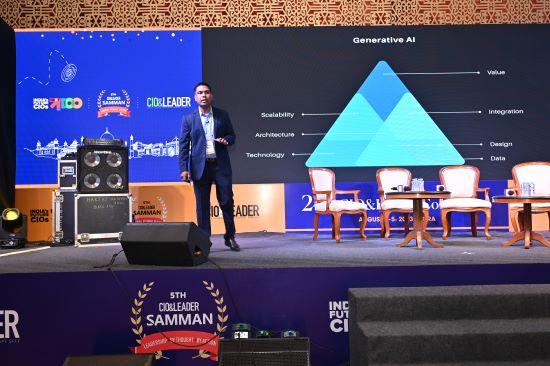
Gartner predicts that by 2026, over 80% of enterprises will adopt GenAI APIs or models.
In today's digital age, automation has taken center stage. With the advancements in Generative AI and Large Language Models (LLMs), we're at the cusp of a revolution in automation, especially in sectors requiring textual responses. In our last 24th Annual CIO&Leader Conference, Pradeepta Mishra, Co-Founder and Chief Architect of Data Safeguard Inc. delved deeper into this fascinating world of automated text generation and saw how businesses can benefit.
The landscape of automated responses
From applications to product reviews, the need for automated responses is evident. One particularly pressing area is customer complaints. Pradeepta said, “Imagine a scenario: A business receives various complaints monthly. These complaints are typically categorized by service, price, or personnel issues.”
Historically, businesses have maintained standard responses to each of these categories. With the emergence of LLMs, businesses can now automate this process.
Training an LLM begins with a pre-trained model. You then embed your data—questions or complaints in this scenario—into this model. After fine-tuning, the model can provide a standard response when a related customer complaint occurs. This not only reduces manual intervention but also ensures a quick and consistent response.
Text-generation and summarization- a revolution
The application of LLMs isn't limited to customer complaints. LLMs have many use cases, from answering frequently asked questions (FAQs) without redirecting users to a URL to summarizing extensive legal contracts or terms and conditions.
“Think about the tedious task of reading a 20-page terms and conditions document. An LLM could potentially summarize this into actionable points, guiding a user on whether to proceed or reconsider.”- Pradeepta added.
Moreover, these models can play a key role in generating social media content, automatically creating meeting minutes, and even scripting code. For example, for standard coding tasks, why reinvent the wheel when an LLM can generate the required code based on millions of similar examples?
The market players and architectures
OpenAI, a pioneer in the field, began its journey with data primarily from Wikipedia—however, the quality of data matters. The context is vital. If you train a model predominantly with novels and then ask business-related questions, it's bound to falter. Over the years, OpenAI has refined its models, with its latest being notably faster and more accurate.
Speaking of architecture, there are primarily three-
- Zero-shot architecture involves a user giving prompts to a pre-trained model. It's free but offers lower accuracy.
- Few-shot mode merges a pre-trained model with some user-specific data for better accuracy. However, it needs more user data to handle.
- Retrieval mode is the most powerful and accurate but is also the costliest. It involves indexing the user prompts and data corpus for quicker and more precise responses.
Challenges ahead
As with any technology, there are concerns. For LLMs, the inclusiveness of training data is vital. The model's context understanding will only be as good as its fed data. Then, there's the paramount concern of data privacy and security, especially with personal or financial data. Furthermore, models have traditionally been limited in how much input text they can handle, although this is rapidly evolving.
Conclusion
The future is clear. Generative AI and LLMs will become integral to businesses. As models become more powerful and architectures more refined, we will see a surge in companies leveraging these tools. The blend of pre-trained foundational models with specific business data will become the norm. As technology advances, our dependency on manual textual responses will diminish, heralding a new era of automation and efficiency.

 In
In
Add new comment